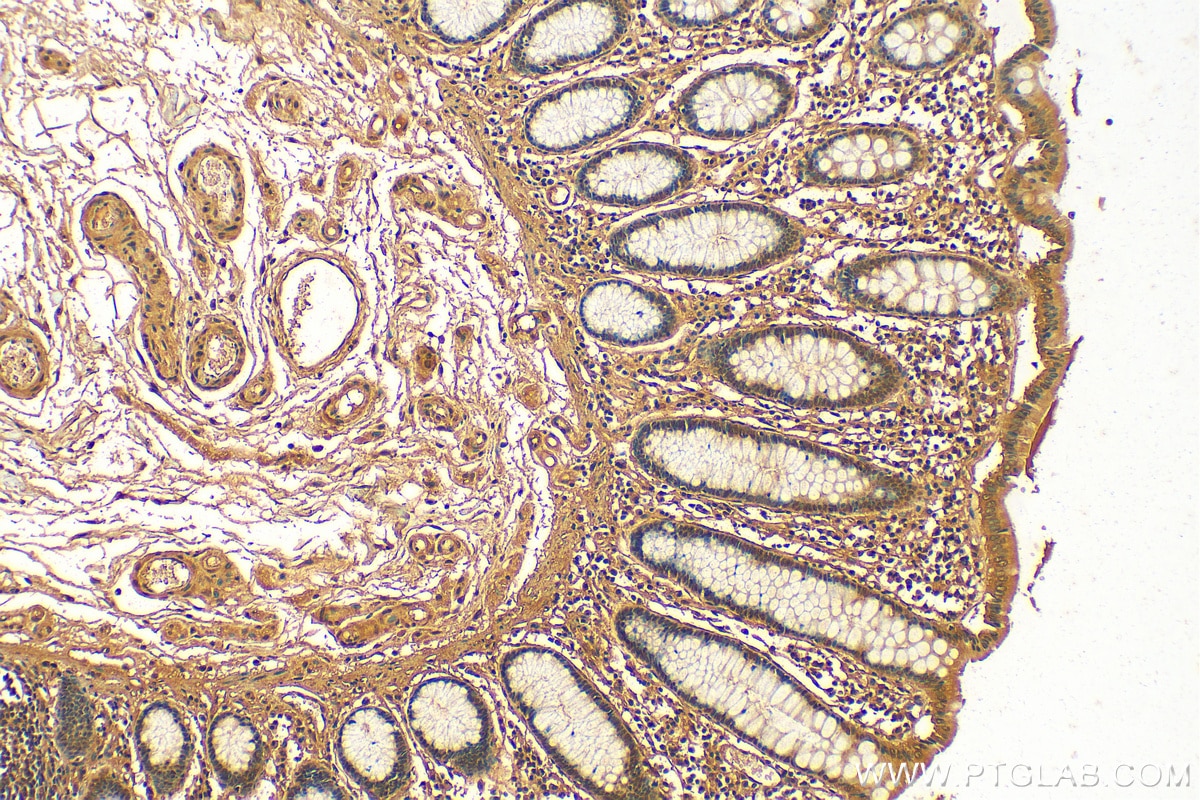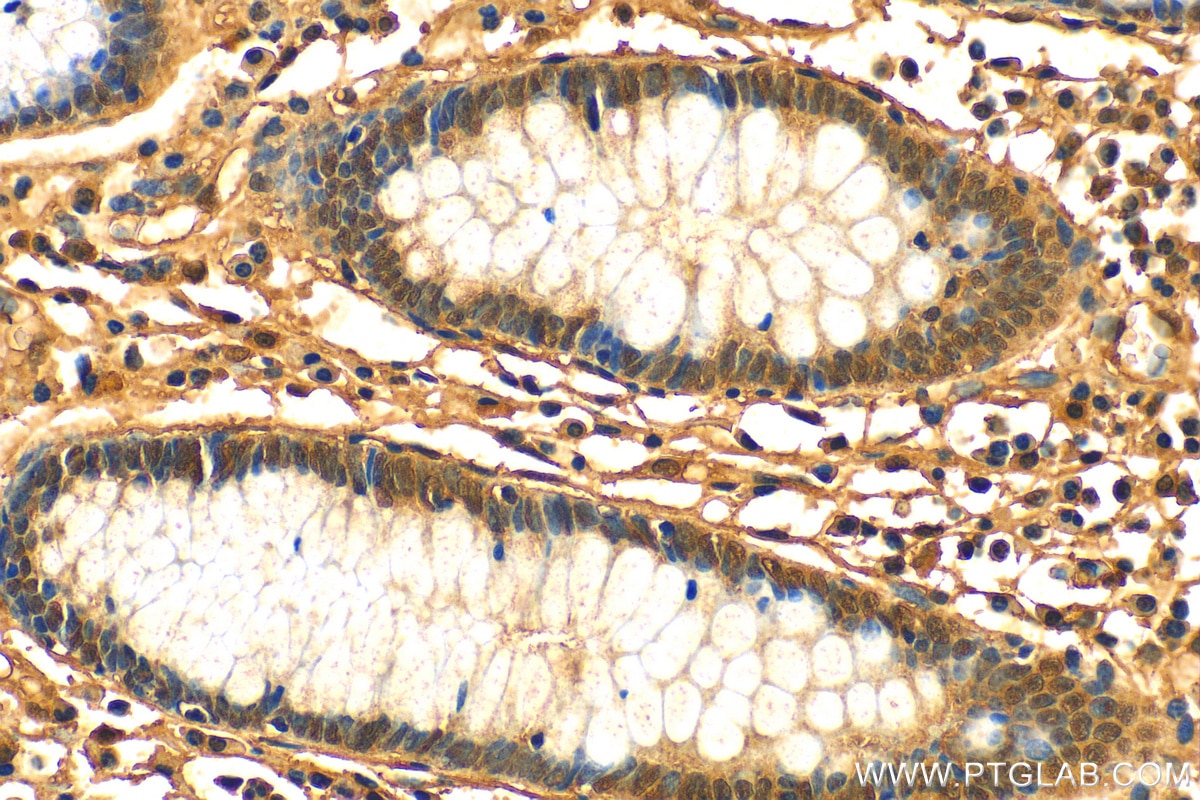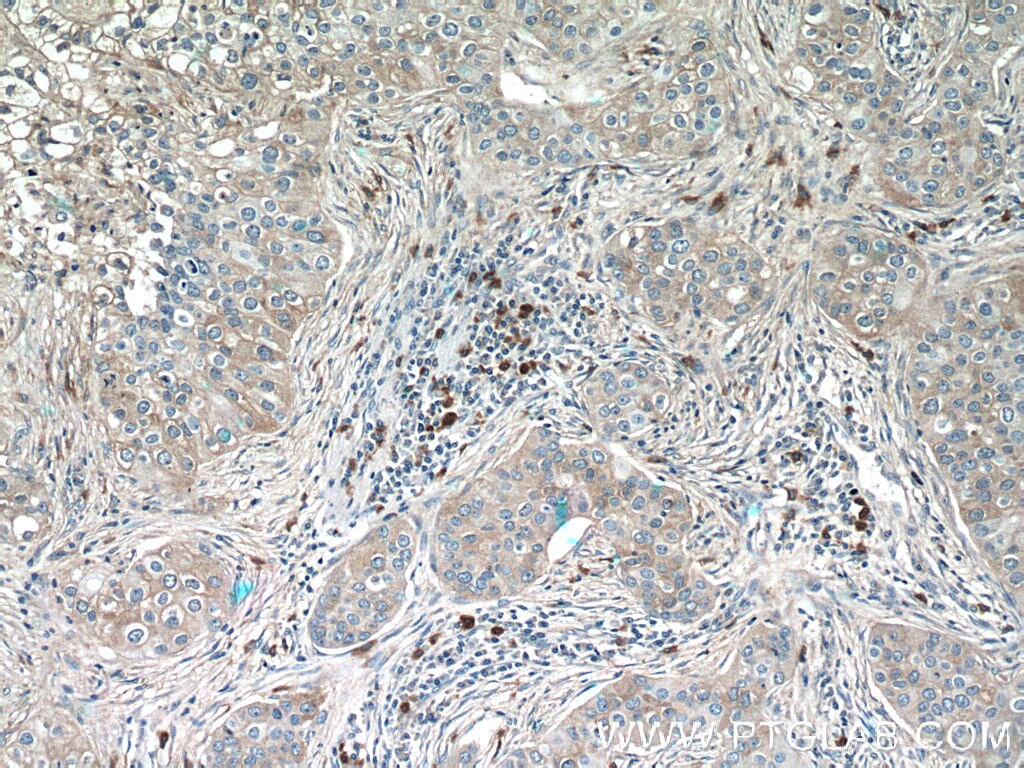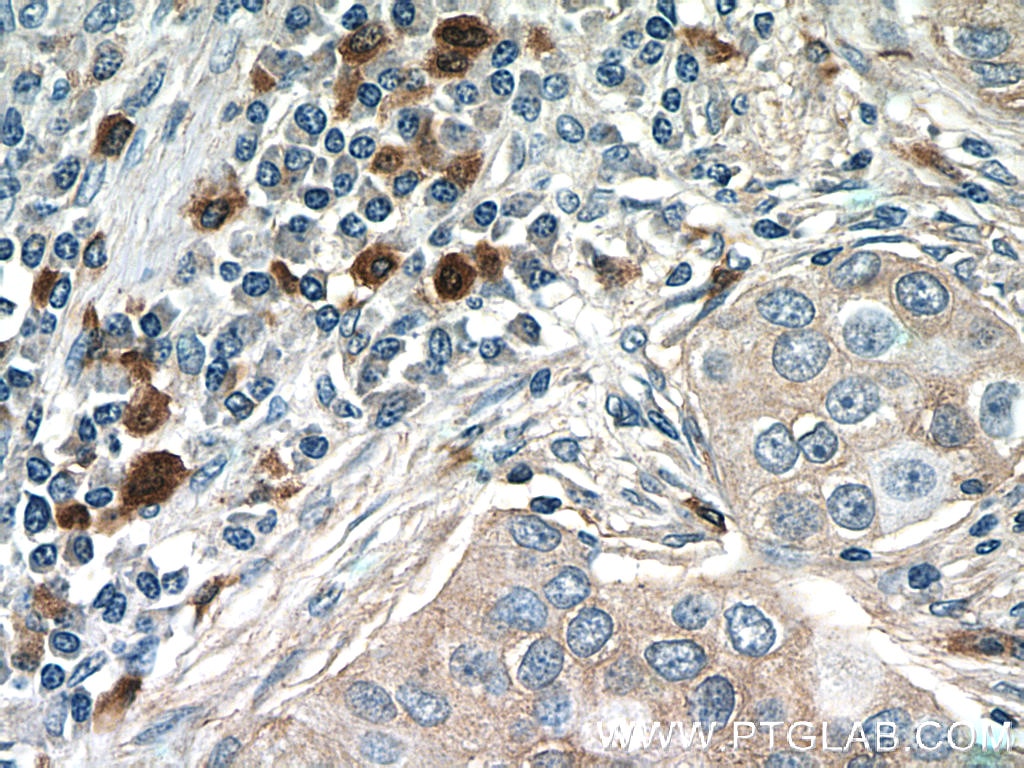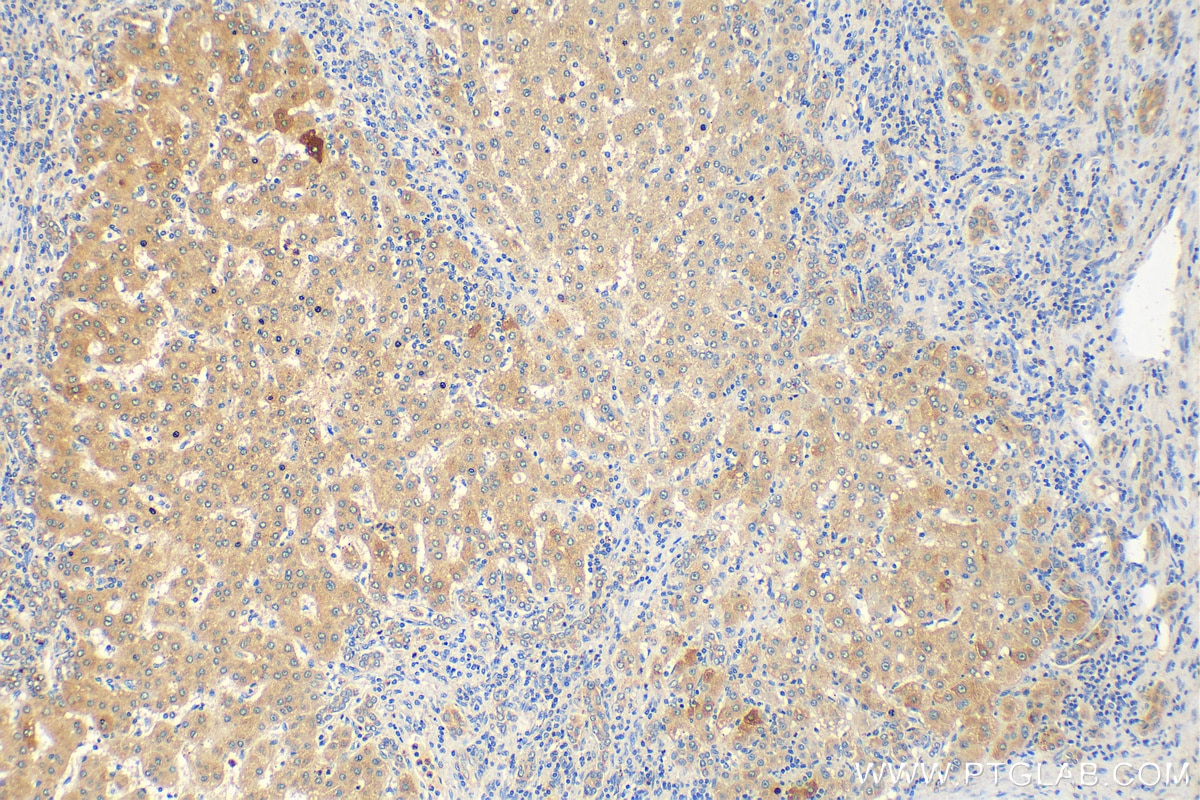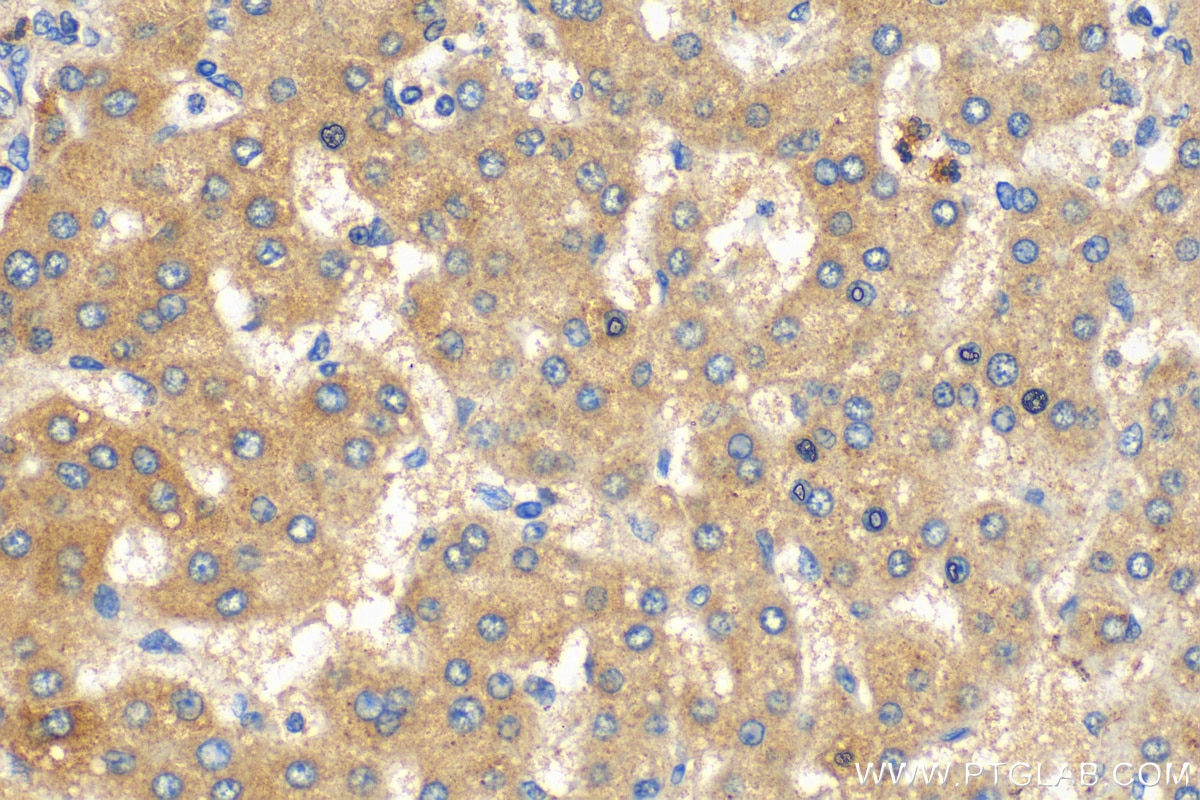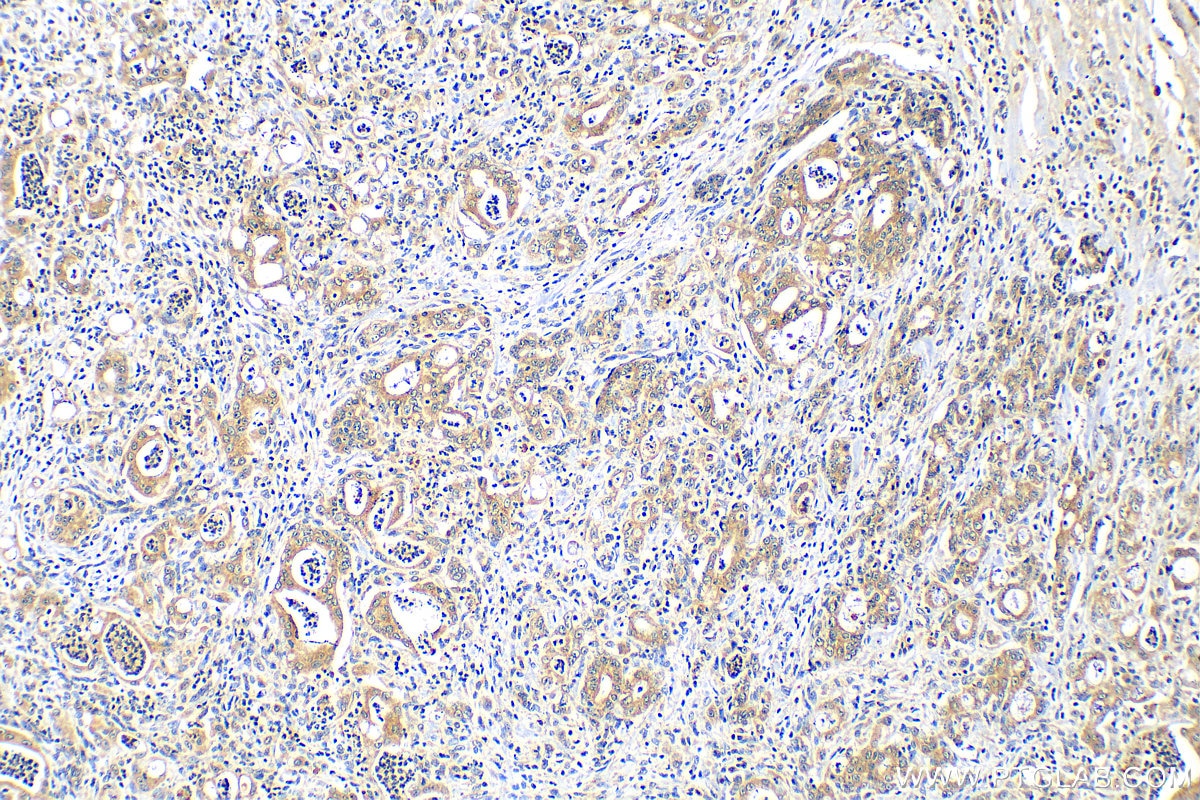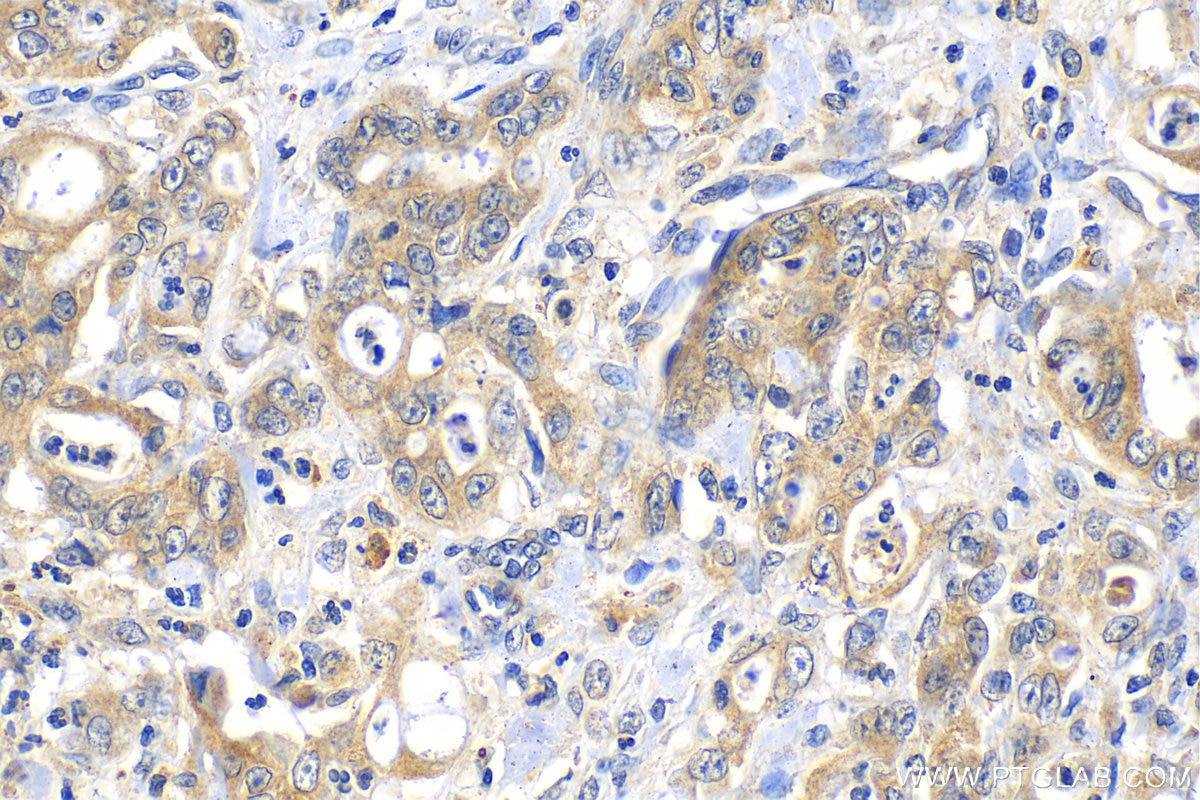CXCL17 Polyklonaler Antikörper
CXCL17 Polyklonal Antikörper für IHC, ELISA
Wirt / Isotyp
Kaninchen / IgG
Getestete Reaktivität
human und mehr (1)
Anwendung
WB, IHC, IF, ELISA
Konjugation
Unkonjugiert
Kat-Nr. : 18108-1-AP
Synonyme
Geprüfte Anwendungen
| Erfolgreiche Detektion in IHC | humanes Kolonkarzinomgewebe, humanes Mammakarzinomgewebe, humanes Leberkarzinomgewebe, humanes Magenkrebsgewebe Hinweis: Antigendemaskierung mit TE-Puffer pH 9,0 empfohlen. (*) Wahlweise kann die Antigendemaskierung auch mit Citratpuffer pH 6,0 erfolgen. |
Empfohlene Verdünnung
| Anwendung | Verdünnung |
|---|---|
| Immunhistochemie (IHC) | IHC : 1:50-1:500 |
| It is recommended that this reagent should be titrated in each testing system to obtain optimal results. | |
| Sample-dependent, check data in validation data gallery | |
Veröffentlichte Anwendungen
| KD/KO | See 1 publications below |
| WB | See 4 publications below |
| IHC | See 6 publications below |
| IF | See 2 publications below |
Produktinformation
18108-1-AP bindet in WB, IHC, IF, ELISA CXCL17 und zeigt Reaktivität mit human
| Getestete Reaktivität | human |
| In Publikationen genannte Reaktivität | human, Maus |
| Wirt / Isotyp | Kaninchen / IgG |
| Klonalität | Polyklonal |
| Typ | Antikörper |
| Immunogen | CXCL17 fusion protein Ag12516 |
| Vollständiger Name | chemokine (C-X-C motif) ligand 17 |
| Berechnetes Molekulargewicht | 119 aa, 14 kDa |
| GenBank-Zugangsnummer | BC093946 |
| Gene symbol | CXCL17 |
| Gene ID (NCBI) | 284340 |
| Konjugation | Unkonjugiert |
| Form | Liquid |
| Reinigungsmethode | Antigen-Affinitätsreinigung |
| Lagerungspuffer | PBS with 0.02% sodium azide and 50% glycerol |
| Lagerungsbedingungen | Bei -20°C lagern. Nach dem Versand ein Jahr lang stabil Aliquotieren ist bei -20oC Lagerung nicht notwendig. 20ul Größen enthalten 0,1% BSA. |
Hintergrundinformationen
CXCL17, also known as C-X-C motif chemokine 17, is a relatively newly discovered member of the CXC chemokine family, which plays a multifaceted role in immune responses and other biological processes. CXCL17 has been implicated in several human pathologies, and its role in mediating immune responses is of particular interest. It is involved in the recruitment of immune cells, angiogenesis, and control of microorganisms at mucosal barriers . It is also known to be involved in tumor angiogenesis and has shown both proinflammatory and anti-inflammatory effects. CXCL17 is highly expressed in the gastric mucosa and other mucosal tissues. Its receptor was identified as GPR35 and named CXCR8, although the functional role of this interaction is not yet fully understood. CXCL17's expression is associated with both disease progression and protection in various diseases. It has been linked to pulmonary fibrosis, asthma, lung cancer, and hepatic cancer, where increased expression is associated with disease progression. Conversely, it may play a protective role in pancreatic cancer, autoimmune encephalomyelitis, and viral infections. Research has shown that CXCL17 promotes neutrophil trafficking and plays a role in the early proinflammatory response by facilitating the recruitment of neutrophils to the site of insult . It also exhibits chemoattractant abilities targeting monocytes and macrophages and can induce the production of proangiogenic factors such as vascular endothelial growth factor A from treated monocytes
Protokolle
| PRODUKTSPEZIFISCHE PROTOKOLLE | |
|---|---|
| IHC protocol for CXCL17 antibody 18108-1-AP | Protokoll herunterladenl |
| STANDARD-PROTOKOLLE | |
|---|---|
| Klicken Sie hier, um unsere Standardprotokolle anzuzeigen |
Publikationen
| Species | Application | Title |
|---|---|---|
Nat Commun Dissecting esophageal squamous-cell carcinoma ecosystem by single-cell transcriptomic analysis. | ||
J Dermatol Sci CXCL17-mediated downregulation of type I collagen via MMP1 and miR-29 in skin fibroblasts possibly contributes to the fibrosis in systemic sclerosis. | ||
Cancers (Basel) A Novel Risk Score Model of Lactate Metabolism for Predicting over Survival and Immune Signature in Lung Adenocarcinoma | ||
Metab Brain Dis Sequencing and Bioinformatics analysis of lncRNA/circRNA-miRNA-mRNA in Glioblastoma multiforme | ||
Curr Issues Mol Biol Loss of CCL28 and CXCL17 Expression and Increase in CCR1 Expression May Be Related to Malignant Transformation of LGBLEL into Lymphoma | ||
Int J Med Sci OCT4 promotes lung cancer progression through upregulation of VEGF-correlated chemokine-1
|
